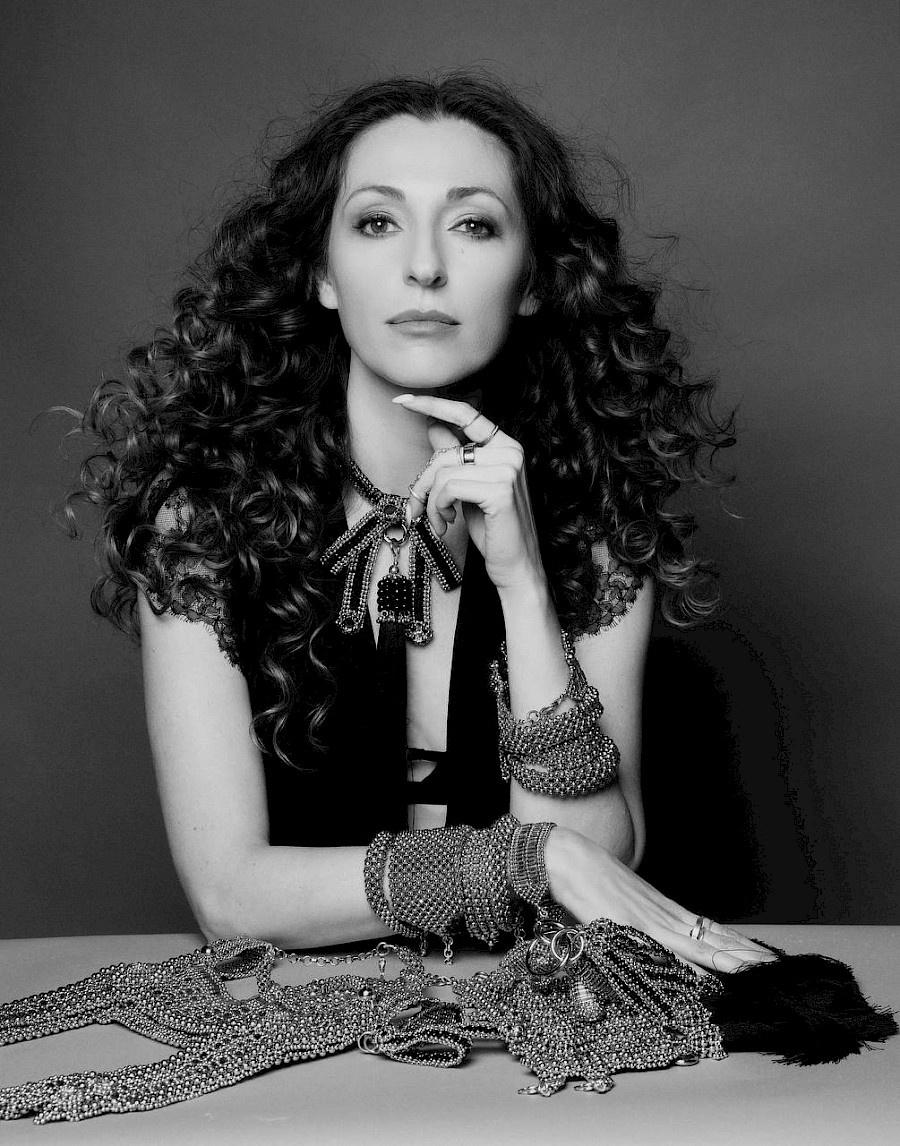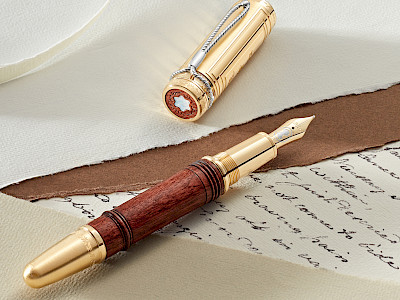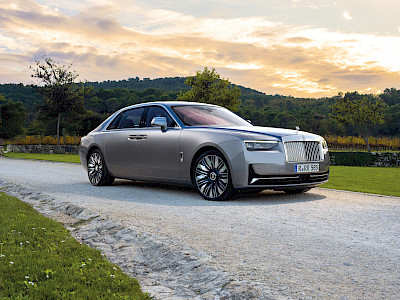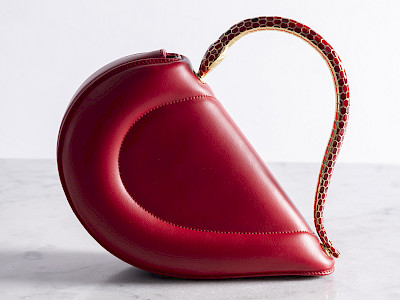
Prepare to immerse yourself in the creative world shaped by Azerbaijan-born designer and founder of the cult brand Object & Dawn, Saida Mouradova. Her portfolio boasts projects for iconic figures such as Beyoncé, Madonna, Cher, David Lachapelle, Offset, Chloe Bailey, and many more. Object & Dawn designs have graced 8 covers of prestigious magazines, revealing the unique blend of elegance and intricate aesthetics that define the brand's products. In an exclusive interview, uncover the secrets behind each creation and delve deep into Saida’s design process.

After 6 years, we are pleased to interview you again. Could you share how the Object & Dawn brand has evolved and navigated the shifts in fashion trends during this period?
It’s hard to believe it’s been that long – feels like a lifetime and a brief moment at the same time.
Putting aside the growing pains and madness induced by the pandemic, Object & Dawn surpassed my expectations in ways I could never have imagined. As a brand, we don't conform to fashion trends. Trends emerge from ideas embraced by the masses. It's a delayed reaction initially set by a few visionaries who are pushing boundaries and innovating in a world filled with copying.
Could you share the inspiration behind your collections, and how it reflects the brand's identity?
Since my childhood, I’ve always inclined toward unexplored and novel directions. So, when I launched my brand, I had a long list of things I wanted to do differently. I’m drawn to complicated concepts, ensuring that whatever I create is something I won’t tire of in just a few years.
One of the rules of our brand involves utilising vanishing techniques and directly collaborating with artisans – no middlemen, no factories, no sweatshop exploitation that the fashion industry is currently filled with. Naturally, my inspiration stems from those techniques, cultures, and history behind them. Also, my designs are influenced by the human body for which they are crafted.
We also produce nearly everything in adjustable sizing, recognising that there is no such thing as a “standard size” for every person – it’s a myth. Designing pieces that are unique in their adjustable fit is an exciting challenge for a designer. I consistently work on refining the fit and form, testing each piece before introducing them to the world.
What challenges and opportunities have you encountered while designing for both jewellery and accessories?
When we initially ventured into designing modular pieces, we faced some technological challenges:
there simply wasn’t any software available that could seamlessly integrate with our website, making it easy for customers to customise and add unique elements to our modular accessories. For example, adding extra tassels in a different colour to one of our harnesses or belts wasn’t as easy as it may seem in theory. Customers had to look for these components separately on the website. Now, almost 6 years later technology finally caught
up. We were able to upgrade our website to have the options we wanted our customers to see without leaving the main page! It’s been a long time waiting. Yet, now it works. It finally works.
 |
 |
Are there specific materials or techniques that have become signature elements of Object & Dawn's designs?
In our current collections, we specialise in a specific beading technique exclusive to India. Currently, I'm delving deeper into various aspects of this technique, integrating it with embroidery and other elements of traditional Indian crafts. Last year, we ventured into leather as one of our primary materials. However, next month marks our expansion into luxury silk, produced in Bali. This collection, developed three years ago, faced delays due to Covid-related disruptions. We aim to establish production hubs in different countries, based on local vanishing techniques. We aspire to be a one-stop shop, offering a diverse range of expertly crafted items and collections that are ethically produced and comparable to couture in quality and techniques.
Can you highlight any collaborations or partnerships that have played a significant role in shaping the brand's aesthetic?
Over the past 6 years, we’ve worked with numerous brands, artists, musicians, and celebrities – it’s hard to pinpoint specific highlights. Every project is an incredible learning experience, be it with Madonna, Beyoncé, Gwen Stefani, or Queens of the Stone Age. My favourite projects are always those where I collaborate with someone with a distinct taste level and style. Erykah Badu stands out because she allows me to design for her based on our conversations. It’s a channelled and spiritual process every time, and she has profoundly impacted my self-worth and confidence as an independent designer. Such connections are rare and cherished, especially at this stage in my design career.
How do you balance maintaining a unique design language while staying relevant to current fashion preferences?
Since starting the brand, I’ve gained insights into my work. The more challenging I am in my design direction – the better people respond. I now understand that our clients seek uniqueness and aren’t afraid to be seen. Both of these facts eliminate any need to follow market trends and the fear of being relevant to the fashion market norms. As a designer it gives me the freedom to work on my own terms – a dream I never thought possible during my time in the corporate world with fashion giants like Ralph Lauren and Banana Republic.
Could you discuss how cultural diversity inspires your creations?
Preserving ancient and vanishing techniques is a core goal of my brand, leading us to explore new horizons. This journey brought me and my family to Bali 3 years ago. When I relocate to a new place, my first step is to immerse myself in the culture through the local population. I love discovering new frontiers and finding out aspects of cultural heritage that can enrich our brand without crossing into cultural appropriation territory. It takes deep knowledge to make sure you do it right. The only way to design into parts of the culture is to learn everything you can about the technique, where it comes from, what it was traditionally used for, and only then apply that to something that looks completely different. Trust me, you wouldn't want to accidentally use a print or weaving technique traditionally reserved for local sacred ceremonies just because you spotted it in the market and thought it would appeal “pretty” to your Western customers.
 |
 |
In your opinion, how has the perception of jewellery and accessories as fashion statements changed over the years?
I'm not sure that has changed or will ever change. Jewellery has always been a means of expressing oneself. If anything, I believe we're gradually entering an age of highly defined personal style where less is more. The quality of everything produced these days is diminishing year by year. However, I observe an increasing number of people incorporating one or two statement pieces as part of their everyday style. Wearing a new outfit every day is no longer considered cool. The Sex and the City era was cool, but it's no longer relevant. Vintage and quality statement pieces are gaining more value, and conscious individuals no longer wish to appear overly consumerist.
Could you share any exciting upcoming projects or collaborations that Object & Dawn enthusiasts can look forward to?
Big projects in the fashion world are often shrouded in secrecy behind a wall of NDAs. However, we have a fun surprise coming up in February, coinciding with the release of this interview. It’s the biggest televised event in the US and we’re working with the lead team of stylists to design some show pieces for the opening act. Aside from working with Beyoncé on Black is King, this is one of the biggest projects we’ve undertaken, and I'm eagerly anticipating its premiere in a few weeks.
How do you envision the future of Object & Dawn, and what aspirations do you have for the brand in the coming years?
Expanding into new categories and techniques that we haven't explored before, a collection for men is set to launch later this year – something our customers have been asking for. We are also looking into expanding into the Asian luxury market. Personally, I'm enthusiastic about the prospect of bringing my brand to Azerbaijan. I always have a few projects in the works, and we launch new collections when they are ready and perfect, not when the fashion industry expects them. This approach is as rebellious as you can get in the fashion world.
Lastly, if you were to describe your brand in 3 words, what would they be?
How about 1 sentence instead?
Unlike anything you’ve ever seen before! This is the prevailing sentiment I often hear when people are introduced to my brand.



